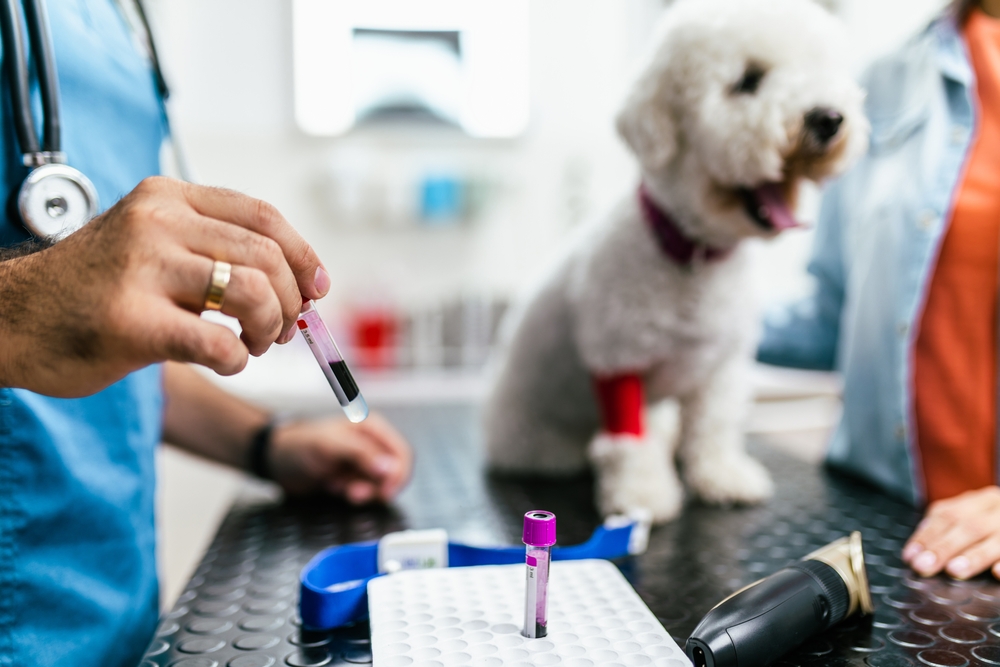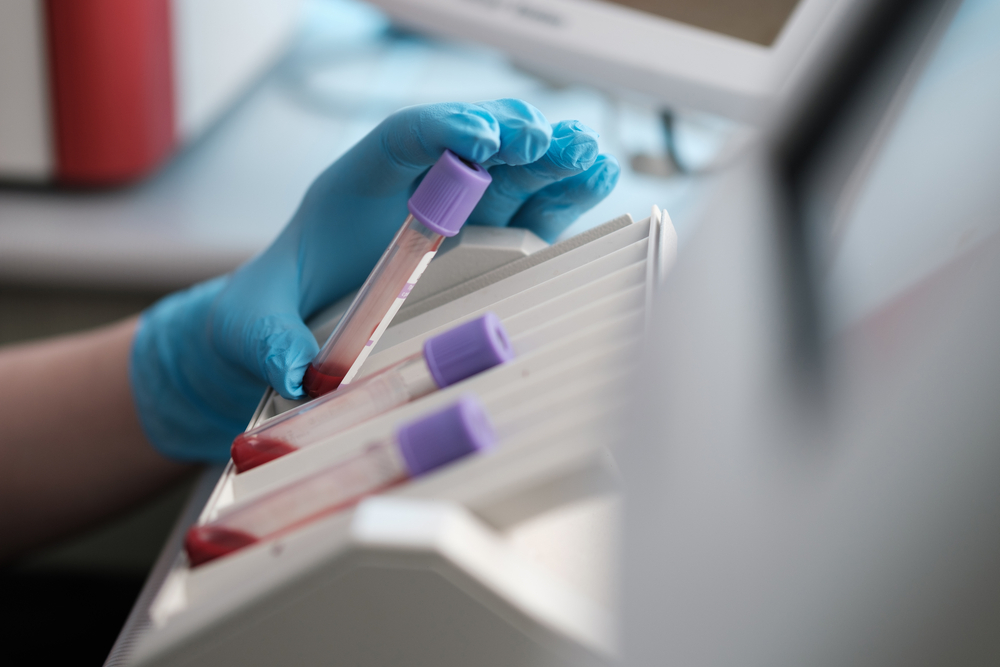You recognize that to determine whether your pet has an undetected medical condition, your veterinarian does blood work. But, when you review the results, which may include various acronyms and numbers, you likely cannot decipher their meaning. Fortunately, your south Austin veterinarian understands this blood work alphabet soup, and our Oliver Animal Hospital team explains the meaning of the acronyms and numbers in your pet’s blood work results.
Why is blood work important to your pet’s health?
Although a physical exam is an excellent diagnostic tool to detect abnormalities in your pet’s health, your veterinarian may order blood work to assess how well your pet’s body systems are functioning. Your pet cannot tell you when they feel sick, and blood work is essential to helping your veterinarian diagnose their adverse health conditions. When reviewed alongside their medical history, clinical signs, and thorough physical exam, your pet’s blood work results round out standard diagnostic testing to provide your veterinarian an in-depth assessment of your pet’s health.
What are some common blood tests for pets?
Depending on the information your veterinarian believes is important to glean regarding your pet’s unique health situation, numerous blood test types are available. For example, some tests specifically evaluate kidney function, while others test blood hormone levels. However, before running blood tests that assess specific body systems, your veterinarian will do a complete blood count (CBC) and blood chemistry panel, which form your pets’ blood test foundation, and provide a general evaluation of their overall health status.
What do my pet’s blood work results mean?
When reviewing your pet’s blood work results, the rows of letters may confound you. These acronyms indicate the various blood component levels. In a CBC, the components are grouped as red blood cells (RBCs), white blood cells (WBCs), and platelets (PLTs). A standard blood chemistry panel evaluates your pet’s organ function, in addition to checking blood sugar and several other blood components. Your pet’s CBC results include information about the following:
- RBCs — RBCs transport oxygen throughout the body. An elevated RBC count can indicate dehydration, while a low number can indicate anemia.
- WBCs — WBCs are responsible for fighting infection in the body. Elevated WBC counts can indicate infection, inflammation, and some cancers. Low numbers may indicate an overwhelming infection or a bone marrow abnormality.
- PLTs — PLTs enable the blood to clot, and low PLT counts can indicate bleeding issues.
- HCT — Hematocrit (HCT) is a calculated percentage of red blood cells in circulation. The HCT value provides similar information as the RBC value, but in a different form.
- HGB — Hemoglobin (HGB) is an RBC component necessary to transport oxygen throughout the body.
- MCV — Mean corpuscular volume (MCV) reports RBCs’ size. A high MCV can indicate regenerative anemia.
- MCH and MCHC — Mean corpuscular hemoglobin (MCH) and mean corpuscular hemoglobin concentration (MCHC) quantify the amount of hemoglobin in each red blood cell.
An additional CBC component (i.e., a differential) quantifies each type of WBC.
CBC results provide a lot of information about your pet’s health, and another common blood test—a standard blood chemistry panel—reveals more detail, which can help your veterinarian determine whether your furry pal requires additional diagnostic testing focused on a specific adverse health condition. Your pet’s standard blood chemistry panel results include information about the following:
- ALB — Albumin (ALB) is a blood protein that helps evaluate hydration, and intestinal, liver, and kidney disease.
- ALP — Elevated alkaline phosphatase (ALP) may indicate liver damage, Cushing’s disease, and—in young pets—active bone growth.
- ALT — Alanine aminotransferase (ALT) also indicates liver damage, but does not pinpoint the cause.
- AMYL — Elevated amylase (AMYL) can indicate pancreatitis or kidney disease.
- BUN — Blood urea nitrogen (BUN) indicates a kidney function condition. Elevated BUN (i.e., azotemia) may indicate that kidney, liver, or heart disease is present, in addition to shock or dehydration.
- CA — Calcium (CA) abnormalities are indicative of several diseases, including tumors, kidney disease, and hyperparathyroidism.
- CRE — Creatinine (CRE) indicates a kidney function condition, and helps your veterinarian differentiate your pet’s condition between kidney and non-kidney-related elevated BUN causes.
- GLOBs — Globulins (GLOBs) are a blood protein that often increase when chronic inflammation is present.
- GLU — Glucose (GLU) is a measurement of your pet’s blood sugar. An elevated GLU value can indicate diabetes, whereas a decreased GLU value can indicate your pet is at risk for seizures or a coma.
- K — Potassium (K) is an electrolyte, which pets lose through vomiting, diarrhea, or excessive urination. Elevated K may indicate kidney disease, dehydration, Addison’s disease, or an urethral obstruction.
- NA — Sodium (NA) is also an electrolyte pets lose through vomiting, diarrhea, kidney disease, and Addison’s disease.
- PHOS — Elevated phosphorus (PHOS) often indicates kidney disease, hyperthyroidism, and bleeding disorders
- TBIL — Total bilirubin (TBIL) levels can indicate liver or hemolytic disease.
- TP — Total protein (TP) helps evaluate your pet’s hydration status, and provides additional information about disease in their organs.
- T4 — Thyroxine (T4) is a thyroid hormone that can help diagnose hypothyroidism or hyperthyroidism.
When should my pet have blood work done?

Pets in all life’s stages should have regular blood work, not simply because they are sick or injured. Your veterinarian may perform your pet’s regular blood work for the following reasons:
- Screening for health problems — Blood work provides an internal look at your pet’s health status, allowing your veterinarian to detect early disease signs, before they become outwardly apparent.
- Providing a baseline for future blood work — Over time, your veterinarian can detect subtle abnormalities in your pet’s blood work once a baseline of their normal values has been established.
- Assessing anesthetic risk — Before your pet undergoes a veterinary procedure that requires anesthesia, your veterinarian can assess their health status, and create a customized anesthetic protocol to keep them safe—before, during, and after surgery.
- Monitoring drug therapies — Pets who have chronic conditions, such as osteoarthritis, diabetes, or heart disease, require lifelong medications, and your veterinarian performs regular blood testing to ensure the dose remains within a therapeutic range to minimize potential adverse effects.
Your pet’s blood work results may cause you to stare blankly at the alphabet soup of puzzling acronyms and numbers. Fortunately, an expert translator is at your service—your south Austin veterinarian is always willing to review your pet’s blood work results with you. Contact our Oliver Animal Hospital team to see if your pet is due for routine blood work.







Leave A Comment